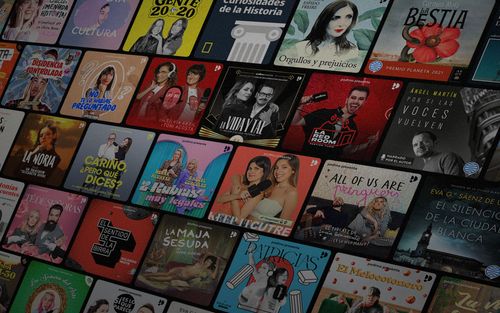Constraint Induced Therapy: Part I
The NOGGINS AND NEURONS Podcast - Ein Podcast von Stroke & Brain Injury

Constraint Induced Therapy: Part I OVERVIEW: Pete: And I asked whoever answered the phone, may I please speak to Dr. Ince. And he goes ‘hello’ and I’m in a panic because I’m like this is the guy! It took me three days to find him! And I’m like, ahh, Dr. Ince my name is Pete Levine and I’m doing a book on ah Constraint Induced Therapy and um Dr. Taub said that you were the first human to ever do it on humans and I’m really excited to talk to you... and he goes ‘I can’t hear you. There doin’ construction outside. Wait, let me close the door.’ Boom! Door slams and he comes back and he tells me this fantastic story. Pete quoting Dr. Ince: In 1967, I’m in a Macy’s and I’m standing there next to this guy. I don’t know who he is, and ah, we’re at a table with toys and our wives are gone doing something, I don’t what they were doing. And he was fooling with this toy...’ Pete: I always imagine this toy was the monkey with the two cymbals going like shika tik tik. Pete quoting Dr. Ince: ‘And he was foolin’ with this toy and we got to talking and I’m a physiatrist and he was doing this stuff and he invited me to his lab in Brooklyn...’ Pete: And this is my best NY accent...I’m so sorry...you know I was born in Manhattan, so I have a little bit of right to do this. Pete quoting Dr. Ince: ‘And um, and I asked him: What you're doing with these monkeys... Can I do it with humans? And what I found was that it could be done with people. We did the experiment. We were the first to publish about it and with some people it was successful, with some people not so successful, and some people it was a total failure.’ Pete: And that’s still where we are today. Constraint Induced Therapy is not for everyone. I think you would agree. Deb: Yes. That’s fascinating! What a cool life you have! Pete: I know! Lawrence Ince... he was so cool with me. Once he saw that I wasn’t calling him to sell him life insurance or something...you know he was willing to talk. So, he was great. It was just great. It sends shivers up my spine still... EPISODE SUMMARY: This episode of NOGGINS & NEURONS: Stroke and TBI Recovery Simplified is all about Constraint Induced Therapy (CIT). CIT is a big topic and we talked for a long time – enough for two full episodes. In this part 1 section we: Heard about the history of CIT - that it began with Nobel Prize winner, Sir Charles Sherrington Learned that Sir Charles Sherrington coined the words ‘synapse,’ and ‘neuron,’ and he talked about ‘neural networks.’ That's not all, he drew neurons and synapses! Listen to learn why this is a BIG DEAL... Reviewed dorsal root rhizotomy and went deeper into it, including the procedure and process – according to Pete, it's a really great tool for spasticity treatment Learned about reflexes and movement Talked about the role of Operant Conditioning in CIT Compared differences between research done by Dr. Edward Taub and that performed by Dr. Stephen Page & Pete Levine Tied in the importance of home programs and clinic follow up for client follow through This episode begins with a bit of fascinating neuroscience history to include Nobel Prize winner Sir Charles Sherrington. There’s no rabbit hole involved as it ties right into the topic of Constraint-Induced Therapy! Pete takes us along a journey into the research using his artful way of telling a story that keeps everyone captivated. We transition smoothly from the early days of CIT into Dr. Edward Taub’s work, and then onto detailed information around the modified version of CIT with our very own Peter G. Levine’s work. As always, we want to hear your top takeaways! LINKS TO ARTICLES, BOOKS AND OTHER IMPORTANT INFORMATION: The Brain Science Podcast with Ginger Campbell, MD. Episode 119 with Dr. Edward Taub Episode 120 with Dr. Edward Taub Lee, H. J., Moon, H. I, Kim, J. S., & Yi, T. I. (2019). Is there a dose-dependent effect of modified constraint-induced movement therapy in patients with hemiplegia? NeuroRehabilitation (Read

